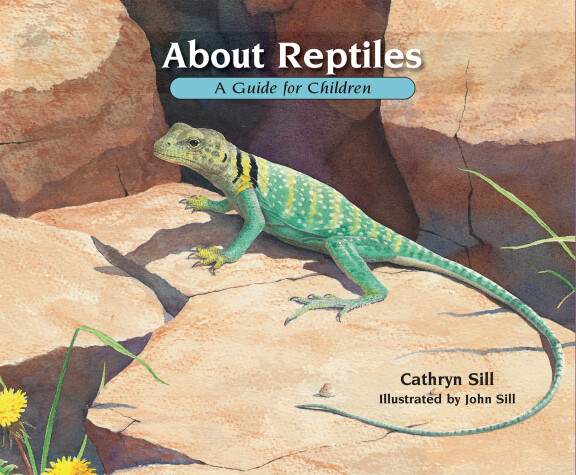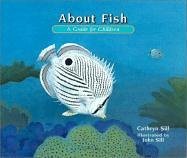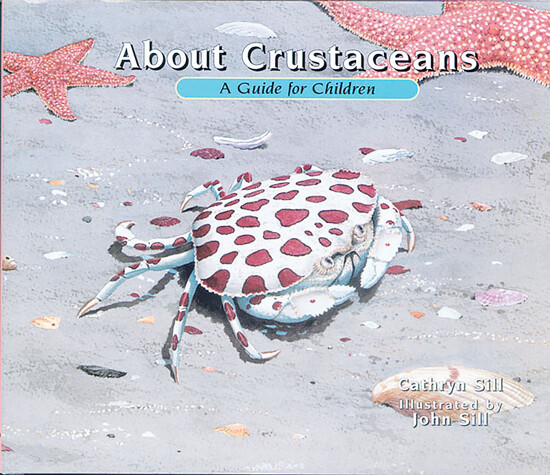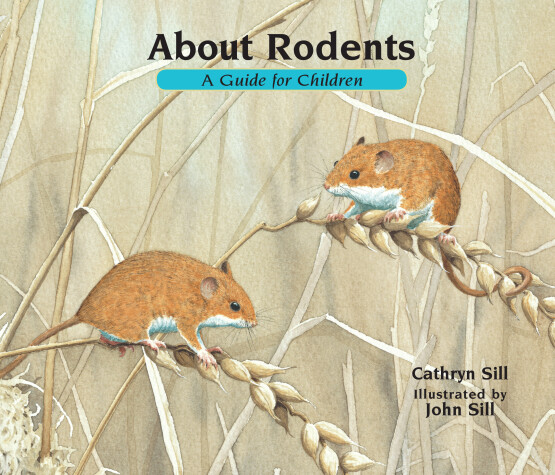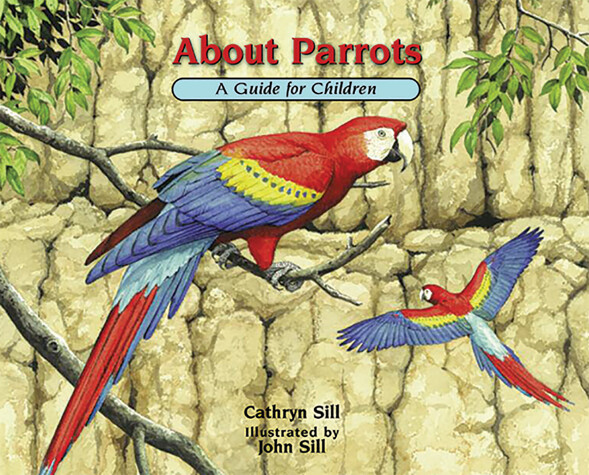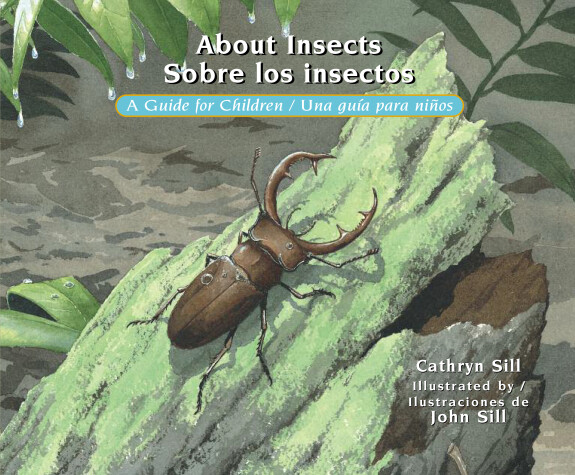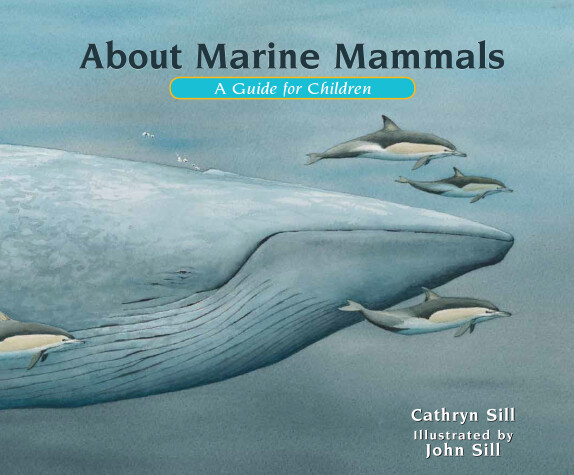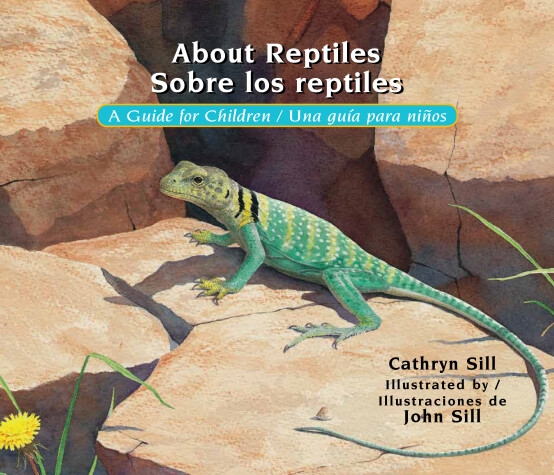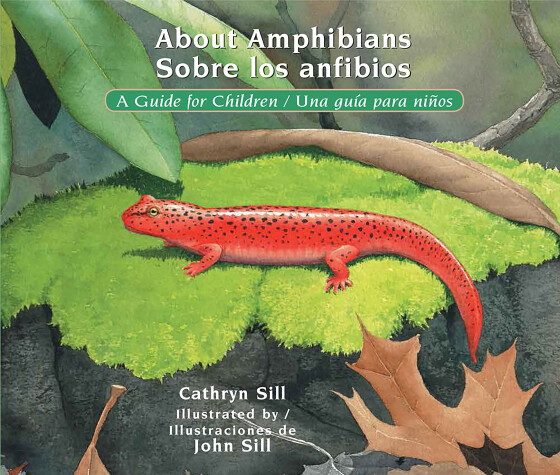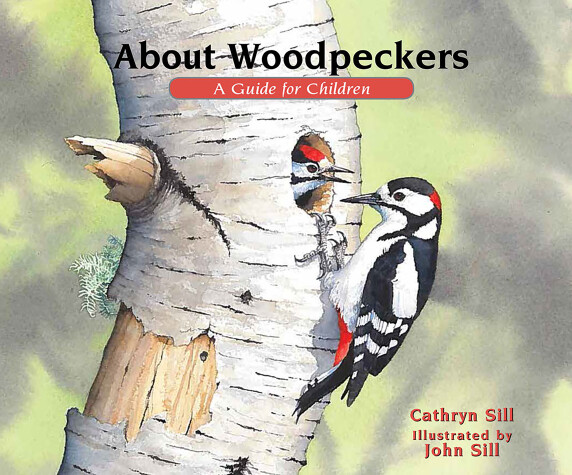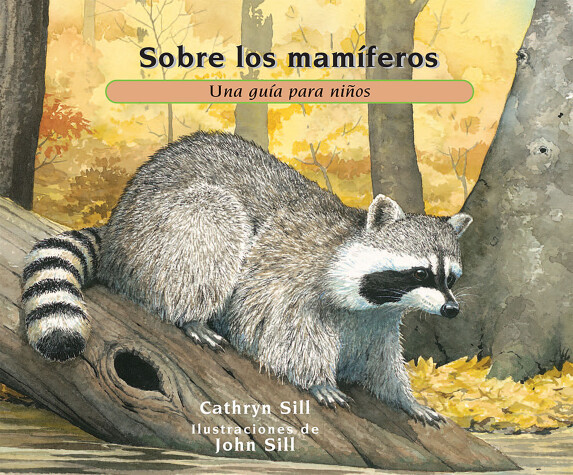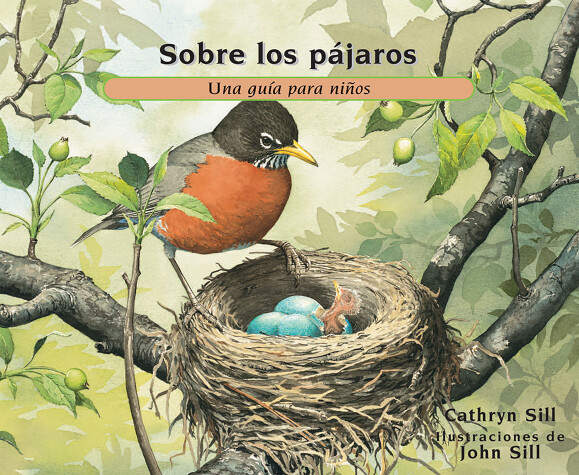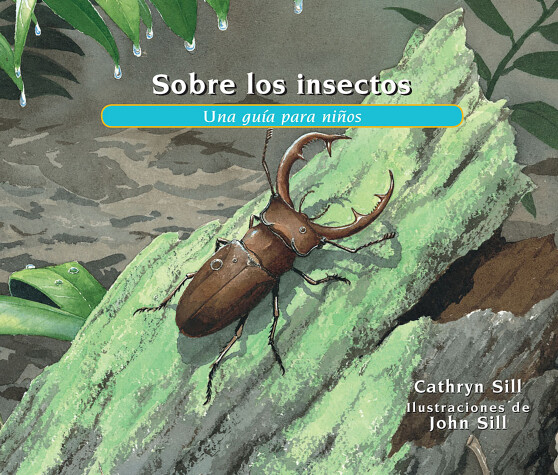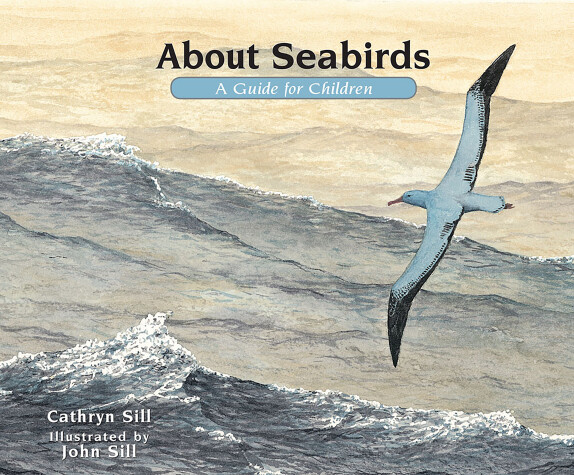About...
20 primary works • 28 total works
Book 3
Author and educator Cathryn Sill explains in simple language the basic characteristics that all reptiles share, while offering a look at many of the animals that fall into this diverse category, including ever-popular lizards, snakes, and turtles.
The beautifully detailed paintings of noted wildlife illustrator John Sill depict reptiles in their habitats and highlight their unique aspects. An afterword provides more detail on each reptile, inspiring further learning.
Book 4
In this addition to the acclaimed About... series, author and educator Cathryn Sill uses simple, easy-to-understand language to teach children what insects are, how they look, how they move, what they eat, and where they live.
With beautifully detailed, realistic paintings, noted wildlife illustrator John Sill introduces readers to a wide variety of insects, from ants and beetles to grasshoppers and the monarch butterfly.
An afterword provides further details, inspiring young readers to learn more.
Book 5
This addition to the acclaimed About... series uses simple, easy-to-understand language to teach younger children what amphibians are, how they look, how they move, what they eat, and where they live.
With beautifully detailed, realistic paintings, noted wildlife illustrator John Sill introduces readers to a variety of amphibians, from frogs and toads to salamanders and more.
An afterword provides details on the animals featured and inspires readers to learn more.
Book 6
Book 8
In this volume from the series, educator and author Cathryn Sill uses simple, easy-to-understand language to teach children what crustaceans are, how they look, how they protect themselves, what they eat, and where they live.
With beautifully detailed, realistic paintings, noted wildlife illustrator John Sill introduces readers to the diversity of the crustacean population, from the sand fiddler crab to the California rock lobster. An afterword provides more details about the species featured.
This books is ideal for casual explorations into nature as well as for early childhood and elementary science units on animals.
Book 11
This acclaimed beginner's guide offers a first glimpse into the natural world of rodents—everything from porcupines and deer mice to squirrels, hamsters, and more. Author and educator Cathryn Sill uses simple, easy-to-understand language to teach children what rodents are, how they look, how they move, what they eat, and where they live.
The beautifully accurate paintings by noted wildlife illustrator John Sill depict a variety of rodents, from the tiny Eurasian harvest mouse to the hefty capybara of South America.
An afterword provides more details for curious young naturalists.
Book 14
In this addition to the acclaimed About... series, author and educator Cathryn Sill uses simple, easy-to-understand language to teach children what hummingbirds are, how they look, how they move, what they eat, and where they live.
The beautifully detailed, realistic paintings of noted wildlife illustrator John Sill introduce readers to the many varieties of hummingbirds—from the smallest type (the bee hummingbirds of Cuba) to the largest (the giant hummingbirds of the Andes Mountains in South America). An afterword inspires further learning.
This beginner's guide to hummingbirds is perfect for early childhood and elementary units in science and animal life.
Book 15
This addition to the acclaimed About... series explains to children in simple, easy-to-understand language what mammals are, what they eat, and where they live.
Beautifully detailed, realistic paintings by wildlife illustrator John Sill introduce readers to the huge variety of mammals, from the tiny white-footed deermouse to the large American bison. An afterword provides more details about the animals featured in the book.
Parents and pre-school and primary-grade teachers will find this an attractive choice for introducing kids to mammals.
Book 16
In this addition to the acclaimed About... series, author and educator Cathryn Sill uses simple, easy-to-understand language to teach children what parrots are, what they do, and how they live.
With beautifully detailed, realistic paintings, noted wildlife illustrator John Sill introduces readers to the diverse population of parrots—from the colorful blue lorikeets of the Polynesian Islands to the rosy-faced lovebirds of southwestern Africa. An afterword provides more details for further exploration.
Book 18
In this addition to the acclaimed About... series, author and educator Cathryn Sill uses simple, easy-to-understand language to teach children what insects are, how they look, how they move, what they eat, and where they live.
With beautifully detailed, realistic paintings, noted wildlife illustrator John Sill introduces readers to a wide variety of insects, from ants and beetles to grasshoppers and the monarch butterfly.
An afterword provides further details, inspiring young readers to learn more.
Book 19
In this beginner's guide, author and educator Cathryn Sill simply and clearly shows children what is essential for understanding and appreciating marine mammals—how they look, how they move, what they eat, and where they live. She covers animals as diverse as whales and otters to dolphins, polar bears, and more.
The beautifully detailed, realistic paintings of noted wildlife illustrator John Sill depict a variety of marine mammals. An afterword provides more details for further exploration.
Book 20
Author and educator Cathryn Sill explains in simple language the basic characteristics that all reptiles share, while offering a look at many of the animals that fall into this diverse category, including ever-popular lizards, snakes, and turtles.
The beautifully detailed paintings of noted wildlife illustrator John Sill depict reptiles in their habitats and highlight their unique aspects. An afterword provides more detail on each reptile, inspiring further learning.
Book 21
Noted educator and author Cathryn Sill uses simple, easy-to-understand language to teach children the basic characteristics of what fish are, how they swim, breathe, and reproduce, and explains the different ways they protect themselves from predators.
With beautifully detailed, realistic paintings, noted wildlife illustrator John Sill introduces readers to the diversity of the fish population, from an Arctic char to a porcupine fish. An afterword provides more details, inspiring further learning.
This book is ideal for early childhood and elementary units in science, environment, and marine life.
Book 22
In this addition to the acclaimed About... series, educator and author Cathryn Sill uses simple, easy-to-understand language to teach children what amphibians are, how they look, how they move, what they eat, and where they live.
With beautifully detailed, realistic paintings, noted wildlife illustrator John Sill introduces readers to a variety of amphibians, from frogs and toads to salamanders and more.
An afterword provides details on the animals featured and inspires readers to learn more.
Book 23
This appealing volume introduces young learners to the many kinds of woodpeckers. With the help of the beautifully detailed illustrations from noted wildlife illustrator John Sill, About Woodpeckers explains the basic characteristics that all woodpeckers share, while presenting a closer look at the many types of birds that fall into this diverse category. An afterword provides more details for curious young naturalists.
Ideal for casual exploration as well as for early childhood and elementary science units on animals.
Book 24
This addition to the acclaimed About... series explains to children in simple, easy-to-understand language what mammals are, what they eat, and where they live. Beautifully detailed, realistic paintings by wildlife illustrator John Sill introduce readers to the huge variety of mammals, from the tiny white-footed deermouse to the large American bison.
An afterword provides more details about the animals featured in the book. Parents and pre-school and primary-grade teachers will find this an attractive choice for introducing kids to mammals.
Book 25
In this simple volume, educator and author Cathryn Sill uses clear, easy-to-understand language to teach children what birds are, what they do, and how they live.
Noted wildlife illustrator John Sill provides beautifully detailed, realistic paintings to showcase the birds' diverse and natural worlds, and an afterword provides more details about each bird and inspires further learning.
Book 26
In this Spanish-language addition to the acclaimed About... series, author and educator Cathryn Sill uses simple, easy-to-understand language to teach children what insects are, how they look, how they move, what they eat, and where they live.
With beautifully detailed, realistic paintings, noted wildlife illustrator John Sill introduces readers to a wide variety of insects, from ants and beetles to grasshoppers and the monarch butterfly. An afterword provides further details, inspiring young readers to learn more.
Book 27
Noted educator and author Cathryn Sill uses simple, easy-to-understand language to teach children the basic characteristics of what fish are, how they swim, breathe, and reproduce, and explains the different ways they protect themselves from predators.
With beautifully detailed, realistic paintings, noted wildlife illustrator John Sill introduces readers to the diversity of the fish population, from an Arctic char to a porcupine fish. An afterword provides more details, inspiring further learning. This book is ideal for early childhood and elementary units in science, environment, and marine life.
Book 28
In this addition to the acclaimed About... series, award-winning author and educator Cathryn Sill uses simple, easy-to-understand language to teach children what seabirds are, where they live, what they eat, and how they move.
The striking watercolor paintings by wildlife artist John Sill shows the characteristics all seabirds share, while offering a closer look at a number of these distinctive birds that spend most of their lives on or near the ocean, lakes, or along the shore—from the brown pelican and the king penguin to the magnificent frigatebird and the blue-footed booby. A glossary, afterword, and suggestions for further reading will inspire young readers to learn more.
Perfect for early childhood and elementary science units on birds, marine, and animal life.
